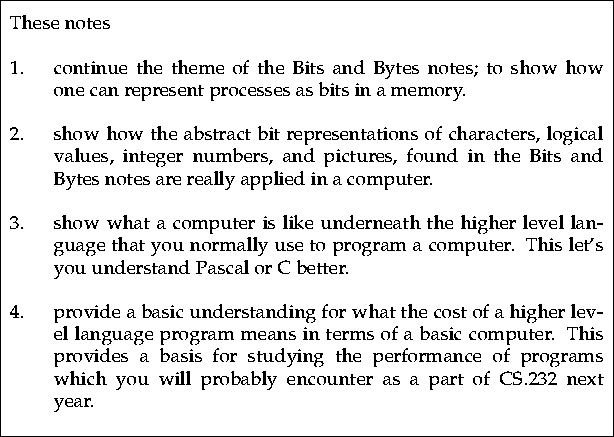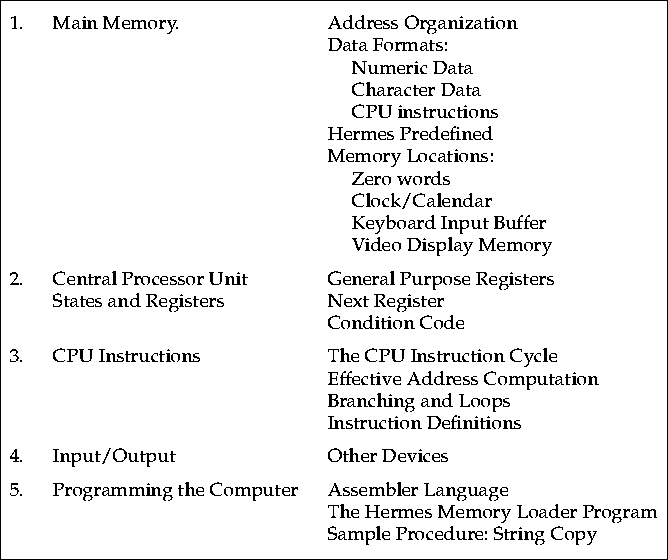
Among the Greek gods Hermes is the swift messenger. His parents are Zeus, king of the gods, and mother earth. He is the father of Venus, the most beautiful of the gods. Hermes serves Zeus as the god's information processor, bringer of information, and transmitter of good and bad news. He is the Greek god most loved by computer studies students.
He soothes people to sleep by waving his wand, called the `caduceus', this is often apparent among those Hermes has blessed in computer studies classes. His Latin name, Mercury, provides the name for Auckland's electrical power company, this is probably not a coincidence.
Hermes is also the god of thieves, he started life by stealing Apollo's cattle when he was only one day old. One wonders, at least I do, why thieves would pick him as their god, since Hermes is not a very good thief, he usually gets caught.
In these notes, to study how a process, or a program, can be represented in bits these notes define a small, simple, yet powerful machine; one which we will call: the Hermes computer.
The purposes of these notes is four fold.

The Hermes computer is capable of computing anything any other modern computer is capable of computing. The instructions it uses may not be the most convenient, but they are similar to many machines (or cpu chips) you might buy today. The memory organization described here is almost universal in modern computers.
The idea of how the Hermes computer works, and how bits are used in it are fundamental computer concepts. These ideas form the basis of all computer processing, and they present a fundamental technology that is exploited in every program. So they are worth understanding.
Since a major point of these notes is to carry on the thesis that everything can be represented in bits which I started in the bits and bytes notes, here in this set of notes I show that computer programs can also be represented as bits. To show how this is done requires an extended exposition: first I shall define an example bit-level computer, and explain how it works. Second I will try to show how one could program the example computer to do real programming tasks. These two steps should leave you convinced that almost anything can be represented as bits, and the examples should give you a general method for building your own bit representations of data.
The Hermes computer, our example machine, consists of four tightly
connected parts.
It is difficult to talk about one part of the computer without
knowing about the others.
So it is wise to read quickly through the whole principles of operation
and then reread it with a better idea of the whole.
It may take several passes through the document to really understand
the whole machine as an integrated whole.
It is worth the energy and effort to accomplish this because once
the simple Hermes machine is understood other computers will be
much easier to grasp.
To make finding definitions easier the machine is presented
in four major sections.
These are Main Memory, Central Processor Registers, Central Processor
Instructions, and Input Output Units.
The central processing unit is commonly abbreviated CPU.

| Summary Outline of the Hermes Computer Notes |
Part 4, the Input/Output part of the Hermes computer is not described in
detail because there is not enough time in the course to understand
it sufficiently.
However in other courses, one of which you will probably take next year,
you will meet a more developed computer and it's conventions including
its complete I/O structure.